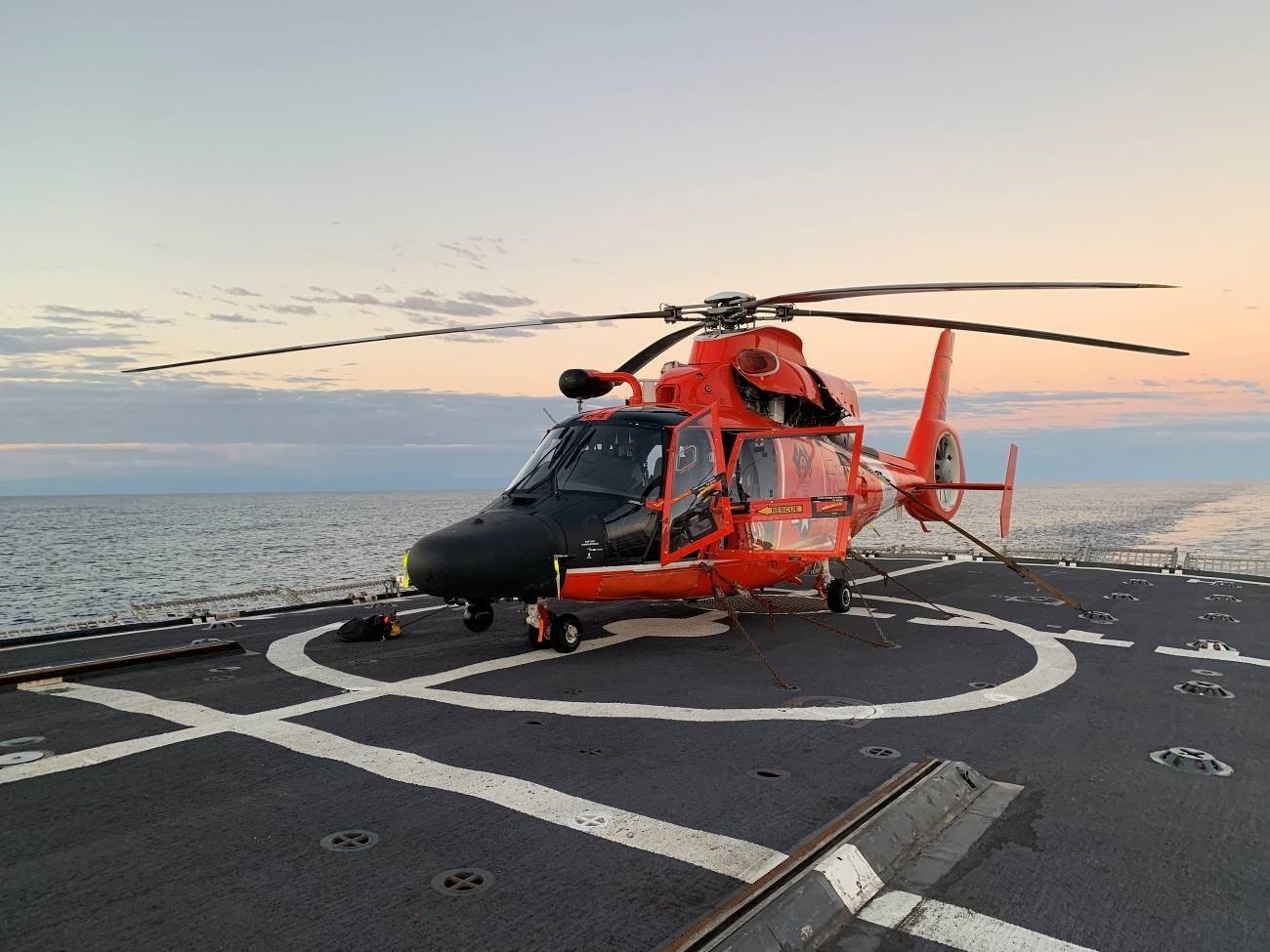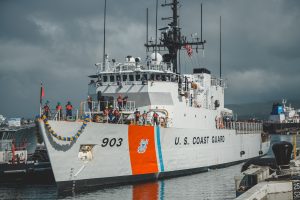USCGC Harriet Lane (WMEC-903) arrived at its new homeport at Joint Base Pearl Harbor-Hickam in Hawai’i on December 13 following a 36-day transit from the U.S. East Coast. The medium endurance cutter, which entered service nearly 40 years ago, recently completed a 15-month life extension program in Maryland.
According to the Coast Guard, while Harriet Lane will engage with a range of “Indo-Pacific partners,” it will particularly focus on engaging with the states of Oceania. Earlier this year Vice Admiral Andrew Tiongson, commander of the Coast Guard in the Pacific, told USNI News that he wanted the cutter to be “aligned with what’s happening in the Blue Pacific” and that its operations should “start” there.
The Coast Guard has taken on a prominent role in the region as part of the U.S. response to strategic competition with the People’s Republic of China. Unlike other U.S. commitments to the region, which have fallen victim to political deadlock in Washington, the Coast Guard has been able to respond relatively rapidly to the evolving strategic landscape.
In 2021, the Coast Guard commissioned three new fast response cutters in Guam. The 46m (154 ft) cutters, which replaced three older 34m (110 ft) Island-class patrol boats, have quickly proven their worth with long-duration deployments in the region. In recognition of the enhanced “expeditionary” capabilities offered by the new cutters, the Coast Guard renamed its Guam outpost U.S. Coast Guard Forces Micronesia/Sector Guam in early 2021.
While fast response cutters are designed to operate within 200 nautical miles (370 kilometers) of their homeport for no more than five days, U.S Coast Guard Forces Micronesia/Sector Guam has regularly pushed them beyond that, with one vessel undertaking a record-breaking 43-day, 8,000nm patrol in 2022.
The Coast Guard has also deployed seagoing buoy tenders, fast response, and national security cutters based in Hawai’i to the region. While endurance isn’t an issue for the national security cutters, they’ve only been able to make irregular deployments to the region, largely due to demand for them in and around Asia.
This has resulted in most U.S. patrols in the region being undertaken by the Coast Guard’s fast response cutters as well as seagoing buoy tenders. Due to the relatively short endurance of these types, long-duration patrols are only possible with the support of regional countries that elect to provide refueling and resupply services. When that support isn’t available, either due to geography or countries denying access to the Coast Guard, it can limit the Coast Guard’s ability to operate in the region.
In comparison, Harriet Lane and its Famous-class sister ships are capable of performing long-duration independent deployments at ranges over 3,800 nautical miles (~7000 kilometers) for more than two months. Harriet Lane is also equipped with a flight deck and hangar, which allows it to embark either an MH-60J or an MH-65 helicopter, if the Coast Guard has the aircraft available. This is a vital capability for Pacific deployments, as many regional governments lack specialty rotary-wing capabilities.

An MH-65 Dolphin Helicopter rests on the deck of the Coast Guard Cutter Harriet Lane during a 71-day patrol in 2021 when the cutter was homeported in Portsmouth, Va. Credit: U.S. Coast Guard.
The cutter’s size also has other benefits. With a crew of around 100 people, it has more hands available to perform the manual labor associated with humanitarian aid and disaster relief (HADR) tasks.
While the deployment of Harriet Lane is a welcome addition to the U.S. Coast Guard presence in the Pacific, it’s far from a decisive one. While the cutter recently completed a life extension program, it’s still more than 30 years old, and the Congressional Research Service (CRS) has previously found that “habitability concerns” are a “fact of life” aboard ships of the class. This reflects a broader challenge facing the Coast Guard which, in the face of budget cuts and lackluster recruiting numbers, has been forced to cannibalize cutters to maintain critical capabilities. While these cuts have not yet impacted the service’s regional mission in the Pacific, it remains a distinct possibility going forward.

































